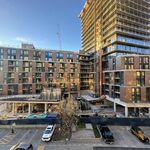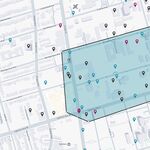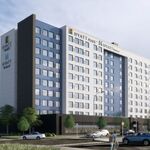James: The TTC subway report Mayor Rob Ford doesn’t want you to read
By Royson James City Columnist
Mayor Rob Ford has been sitting on a TTC report that shows job growth projections are so far off target in North York and Scarborough that it’s not advisable to build a subway linking the two centres.
Sources say Ford was given the analysis almost a year ago, after he demanded to know why the TTC wanted to build a light rail transit line along Sheppard, and not the subway it favoured 25 years ago.
The 11-page report, obtained by the Toronto Star, concludes it is ill-advised to build subways when job numbers, office development and transit ridership are so low.
“The world changed,†a source told the Star. “The mayor got the report,†but it has not gone public because “they don’t like the answer they got. The information is important because it explains why the TTC’s opinion is different today than in 1986.â€
For example, planners projected 64,000 added jobs would come to the North York Centre, near Yonge and Sheppard, between 1986 and 2011. In fact, as of 2006, employment had grown by only 800 jobs over the two decades, the report says.
Scarborough Centre, at McCowan and Highway 401, was forecast to grow by 50,000 jobs. Figures for 2006 reveal a net loss of 700 jobs and a total of 13,700.
The job picture reflects a less than stellar performance all across the city. The 1986 forecast estimated that by 2011 Toronto’s job numbers would increase by 670,000. Not so. Job figures from 2006 show a city-wide growth of just 70,000 jobs over the 20 years.
Latest figures (2010) show that instead of topping 1.9 million jobs, Toronto barely crept up to 1.3 million. Figures for 2010 show North York Centre numbers at 38,800 and Scarborough Centre at 14,700 total.
The numbers are a warning sign for those who would build a large-capacity subway to link the North York and Scarborough centres when the ridership is not there, the report concludes.
But the mayor’s brother, Councillor Doug Ford, would have none of it when contacted by the Star.
“Build a subway and people will come,†he said, refusing to consider TTC figures that show the opposite has happened along Sheppard.
“The TTC? Please, give me a break. They are just justifying union jobs. LRTs destroy neighbourhoods,†he said.
Besides the off-target job projections, other factors have conspired to disqualify Sheppard as a profitable subway route, the TTC report says.
• The Sheppard subway was projected to carry 15,400 people per hour in one direction at its busiest point in the day — the standard way of measuring capacity. In fact, it carries just 4,500. And even if it is extended from Don Mills to the Scarborough Centre, it would top out at between 6,000 and 10,000 people per peak hour, the report says.
• City council, bowing to neighbourhood pressure to scale down development, changed the Official Plan. Instead of encouraging skyscrapers and intense office nodes at major intersections, an Avenues plan was developed that disperses development along the main artery, lowering the heights of buildings but intensifying along the route, not just at intersections. Such a pattern favours LRT transit, which typically has more stops than subways.
• The office building market disappeared, taking jobs with it. Condos sprang up where offices were slated. Condos bring people, but they don’t necessarily take the subway to work because they work all over the GTA. If jobs existed in the Sheppard corridor, then people coming to the jobs would get on the subway in greater numbers.
• Private developers were supposed to build mixed-use developments at or near or on top of the subway stations. But experience shows numerous stations with developable sites “remain vacant for decades,†among them, Eglinton/Yonge, Downsview, Leslie/Sheppard, Eglinton-Allen.
• North York Centre was supposed to deliver 60 per cent of its travelling population to transit. In fact, it is 34 per cent. Scarborough Centre is delivering 21 per cent, not the 55 per cent promised.
• Many commuters were expected to travel between North York Centre and Scarborough Centre. The “employment nodes†didn’t materialize so the commuters had no reason to travel the route.
• Some 20 million travellers a year were expected to connect to the Sheppard subway from outside Toronto. Now the demand is pegged at “extremely limited.â€
The report cites global trends, lack of funding and improved LRT technology as additional reasons the TTC backed away from supporting subway construction.
“All these have combined to reduce the need and justification for very-high capacity transit like subways,†the report says.
One transit planner, speaking anonymously for fear of retaliation from the mayor, said:
“The world has changed. It’s not the way people thought it would evolve back in 1986. Employment — the biggest generator of transit riders — has not materialized in a big way. There are more than 30 per cent fewer jobs than envisioned.â€
Ford has said he will continue to push for subway construction on Sheppard and elsewhere. He says the public want subways, not light rail, which he derisively dismisses as trolleys.
And subway supporters like Gordon Chong, whose pro-subway report is being debated at city hall, says the TTC was strongly in favour of subways when it approved the environmental assessment on the Sheppard subway in 1986.
But the secret TTC report, dated just after Ford convinced the province to give him time to find money for the Sheppard subway extension, says that 25 years ago the subway was the “dominant form of rapid transit. Only four modern light rail lines existed in North America. Light rail was not fully understood and vehicle design was not fully evolved.â€
Since then, new light-rail lines have opened in more than 115 cities around the world; it has emerged as the transit mode of choice for routes too busy for a bus but not near the 15,000 per hour needed to warrant a subway.
Toronto does not yet have a light-rail line. St. Clair comes closest, but it stops too often, is just one car and can’t handle higher capacities.
Sheppard, even if built out to the Scarborough City Centre, will top out at 6,000 to 10,000 riders per peak hour — ideal for light rail transit, the report says.
Gary Wright, chief city planner, told the Star that either light rail or subways will do along Sheppard. But whatever mode is chosen, it should link North York and Scarborough, even if the development targets have not been reached.





